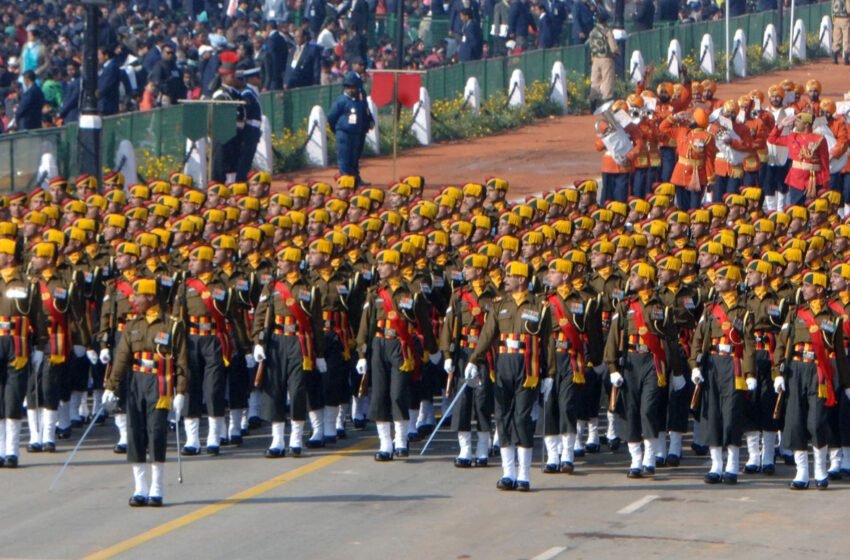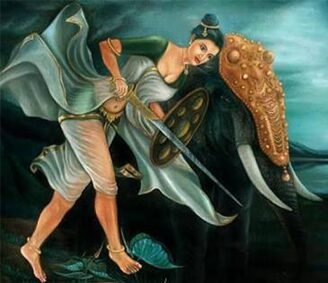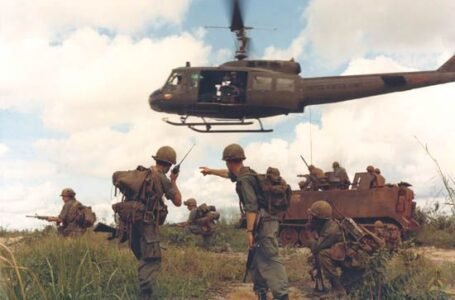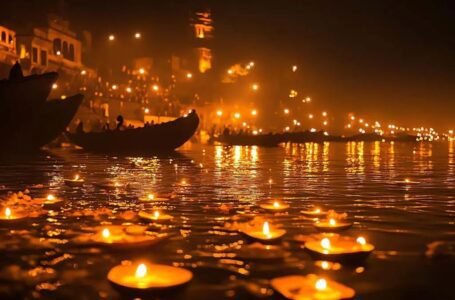Dogra Regiment – Unsung Guardians of the Northern Frontier

Dogra Regiment marching contingent passes through the Rajpath during the 64th Republic Day Parade-2013, in New Delhi on January 26, 2013.
-Trushti Dand
The Dogra Regiment is one of the oldest infantry regiments in the Indian Army, known for its unwavering courage, discipline, and stoic service along some of the country’s most treacherous frontiers. Its origins trace back to 1877, when the British raised the 37th (Dogra) Bengal Infantry, composed largely of Dogra recruits from the hill regions of present-day Jammu & Kashmir, Himachal Pradesh, and parts of Punjab. Two more battalions—the 38th and 41st Dogras—were formed soon after, and together they laid the foundation for the Dogra Regiment, formally established in 1922 as part of the British Indian Army’s reorganization.
The Dogras are primarily a hill people with a strong martial tradition. Historically, they served in the armies of regional Hindu kingdoms and the Sikh Empire before joining the British Indian forces. Renowned for their toughness, loyalty, and endurance in mountainous terrain, Dogra soldiers were considered ideal for high-altitude and frontier warfare. After independence in 1947, the Dogra Regiment was integrated into the Indian Army and continued its legacy of brave service across multiple wars and peacekeeping missions.
Colonial Campaigns and Service in British Wars
Under British command, the Dogra units served in numerous colonial military campaigns across Asia and Africa. They participated in the Second Afghan War (1878–80), where their familiarity with mountainous terrain made them effective against Afghan tribesmen. They were also involved in campaigns in Abyssinia, Burma, and Tibet, most notably in the Younghusband Expedition to Lhasa (1903–04).
During these operations, Dogra soldiers endured extreme climate conditions and fought in geographically demanding zones, contributing to Britain’s imperial reach. Their service was recognized with various medals and commendations, and the community’s martial reputation was further solidified during this period. Dogras were noted for their calm temperament, physical endurance, and capacity to follow orders under pressure—qualities that made them highly valued infantrymen in colonial campaigns.
Role in World War I (1914–1918)
The Dogra Regiment played an important role in World War I, with its battalions deployed in Europe, Africa, and the Middle East. The 1st Battalion (originally the 37th Dogras) was sent to Mesopotamia, where it was involved in the Battle of Ctesiphon and the Siege of Kut (1915–16). These battles were part of the campaign against the Ottoman Empire in Iraq, where Indian troops bore the brunt of fierce resistance and logistical hardships.
The 2nd Battalion (originally the 38th Dogras) served in East Africa, fighting German colonial forces in the harsh terrain of modern-day Tanzania and Kenya. Dogra units also saw action in Palestine and Egypt, supporting the British-led offensive against the Ottomans in the Sinai and Palestine Campaign. Throughout the war, Dogra soldiers earned accolades for their bravery, and several were awarded the Indian Order of Merit and Distinguished Service Medal.
Role in World War II (1939–1945)
In World War II, the Dogra Regiment was extensively involved across various theatres of war. The regiment contributed multiple battalions, which served in Burma, North Africa, Italy, and Malaya. Dogra troops fought the Japanese during the Burma Campaign, notably in the Battle of Kohima (1944) and Battle of Imphal, which were turning points in halting Japanese advancement into India.
The 1st Battalion, part of the 14th Army, served in the jungles of Burma and participated in long-range patrols, ambushes, and frontal attacks in treacherous conditions. In Italy, Dogra battalions fought alongside Allied troops in the mountainous Gothic Line, where they displayed exceptional mountaineering and combat skills. Dogra soldiers in North Africa assisted in the Western Desert Campaign, battling the Afrika Korps under General Rommel. Their role in guarding supply lines and reinforcing Allied offensives was critical to the eventual Axis defeat.
Post-Independence Conflicts and Operations
After Indian independence, the Dogra Regiment continued its tradition of valiant service. It played a key role in the Indo-Pak War of 1947–48, particularly in the defense of Poonch and Naushera during the tribal invasion of Jammu and Kashmir. The Dogras’ familiarity with the region’s geography and climate made them one of the most effective units in the area, as they repelled Pakistani-backed forces in difficult terrain.
During the 1962 Sino-Indian War, the regiment was deployed in the NEFA region and Ladakh, where it suffered heavy casualties but fought bravely in high-altitude combat. In the Indo-Pak War of 1965, Dogra units were heavily engaged in the Akhnoor and Chhamb sectors, and again in 1971, they played a decisive role in the western sector, especially in Punjab and Jammu. Dogra soldiers fought with grit during the Battle of Basantar, where they helped thwart Pakistani armored advances and secured Indian victory.
In counter-insurgency operations, the Dogra Regiment has been continuously active in Jammu & Kashmir, Northeast India, and other internal security zones. The regiment also participated in Operation Pawan in Sri Lanka under the Indian Peace Keeping Force (IPKF) in the late 1980s.
Gallantry Awards and Battle Honours
The Dogra Regiment has earned a distinguished record of gallantry awards and battle honours over more than a century of service. It has received 1 Ashoka Chakra, 3 Maha Vir Chakras, 8 Kirti Chakras, 14 Vir Chakras, and numerous Sena Medals and unit citations.
One of the most decorated actions of the regiment occurred during the Indo-Pak War of 1947–48, when Major Prithi Chand led a daring mission behind enemy lines and was posthumously awarded the Maha Vir Chakra. In the 1971 war, Lance Naik Rattan Singh of the Dogra Regiment was awarded the Vir Chakra for showing exemplary bravery under fire while destroying enemy bunkers.
The regiment’s battle honours include Burma, El Alamein, North Africa, Kut-al-Amara, Naushera, Poonch, Akhnoor, Chhamb, and Basantar. These honours testify to the regiment’s commitment in both conventional warfare and modern asymmetric operations.
Notable Officers and Commanders
The Dogra Regiment has produced many accomplished officers who have contributed significantly to the Indian Army’s leadership. One such example is Lieutenant General K. K. Nanda, a distinguished officer who served in top command roles, including as a Corps Commander.
Major Prithi Chand, known for his heroics in Kashmir during the 1947–48 war, became a legendary figure in the regiment’s history. Brigadier N. C. Rawlley, another Dogra officer, played a crucial role during operations in the Northeast and was instrumental in shaping jungle warfare training for the Army.
The regiment has also produced several commanding officers of regimental centres and training institutions who have emphasized mountain warfare and counter-insurgency expertise, strengthening the regiment’s strategic role in northern India.
Regimental Organization and Training
The Regimental Centre of the Dogra Regiment is located in Faizabad (Ayodhya), Uttar Pradesh. The regiment currently comprises around 20 battalions, including active duty and Territorial Army units. It recruits mainly from the Dogra communities of Himachal Pradesh, Jammu region of J&K, and northern Punjab. The mix of high-altitude villagers and plainsmen gives the regiment an adaptive strength suited for diverse terrains.
Training at the Dogra Regimental Centre focuses heavily on high-altitude warfare, jungle combat, and counter-terrorism. It includes modern weapon training, tactical drills, obstacle handling, and night operations. The regimental ethos emphasizes quiet determination, endurance, and collective spirit—traits that have helped Dogra soldiers thrive under extreme stress.
Traditions, Symbols, and Identity
The Dogra Regiment’s insignia features a pair of crossed khukris with a lion-headed shield, representing strength, courage, and protection. Its war cry is “Jwala Mata Ki Jai!”, invoking the goddess revered by the Dogra community. This religious-cultural connection reinforces their spiritual strength and battlefield morale.
The regiment celebrates Regimental Day on the raising date of the 37th Dogras and honors its history through parades, commemorations, and cultural events. Dogra customs, such as local folk dances, temple worship, and harvest celebrations, are an important part of the regimental culture and identity. These traditions foster brotherhood and continuity among the troops.
Cultural Significance and Community Pride
The Dogra Regiment is not only a symbol of military excellence but also of cultural unity for the Dogra people. The Dogra identity, rooted in hill warrior culture, devotion to duty, and community ethics, is reflected in the ethos of the regiment. Families in Jammu, Kangra, and Una often have a tradition of serving in the regiment, with generations enlisting to uphold their forebears’ legacy.
The stories of Dogra martyrs and heroes are told across households and local temples. Their valor is memorialized in community gatherings, school textbooks, and village festivals. This deep connection between the regiment and its recruiting areas enhances local pride and national unity.
Legacy and Contemporary Role
With more than a century of distinguished service, the Dogra Regiment stands tall among the finest regiments of the Indian Army. Its contributions across multiple wars, both under British rule and after Indian independence, have earned it national respect and recognition.
In modern times, the regiment plays a critical role in guarding India’s northern frontiers, especially in the high-altitude regions of Ladakh, Himachal, and J&K. Its experience in counter-terrorism, mountain warfare, and peacekeeping missions makes it a vital part of India’s strategic defense apparatus. The regiment continues to adapt to the evolving nature of warfare while preserving its age-old values of courage, humility, and duty.
Conclusion
The Dogra Regiment, though less celebrated in popular discourse, remains one of the Indian Army’s most reliable and courageous forces. From the snow-covered Himalayas to the deserts of Africa and jungles of Burma, Dogra soldiers have consistently exemplified professionalism, valor, and patriotism. Their legacy is etched in the annals of military history, and their continued service along India’s volatile northern borders ensures that the nation sleeps in peace. As true “Guardians of the Northern Frontier,” the Dogras remain steadfast—unsung, but never forgotten.


